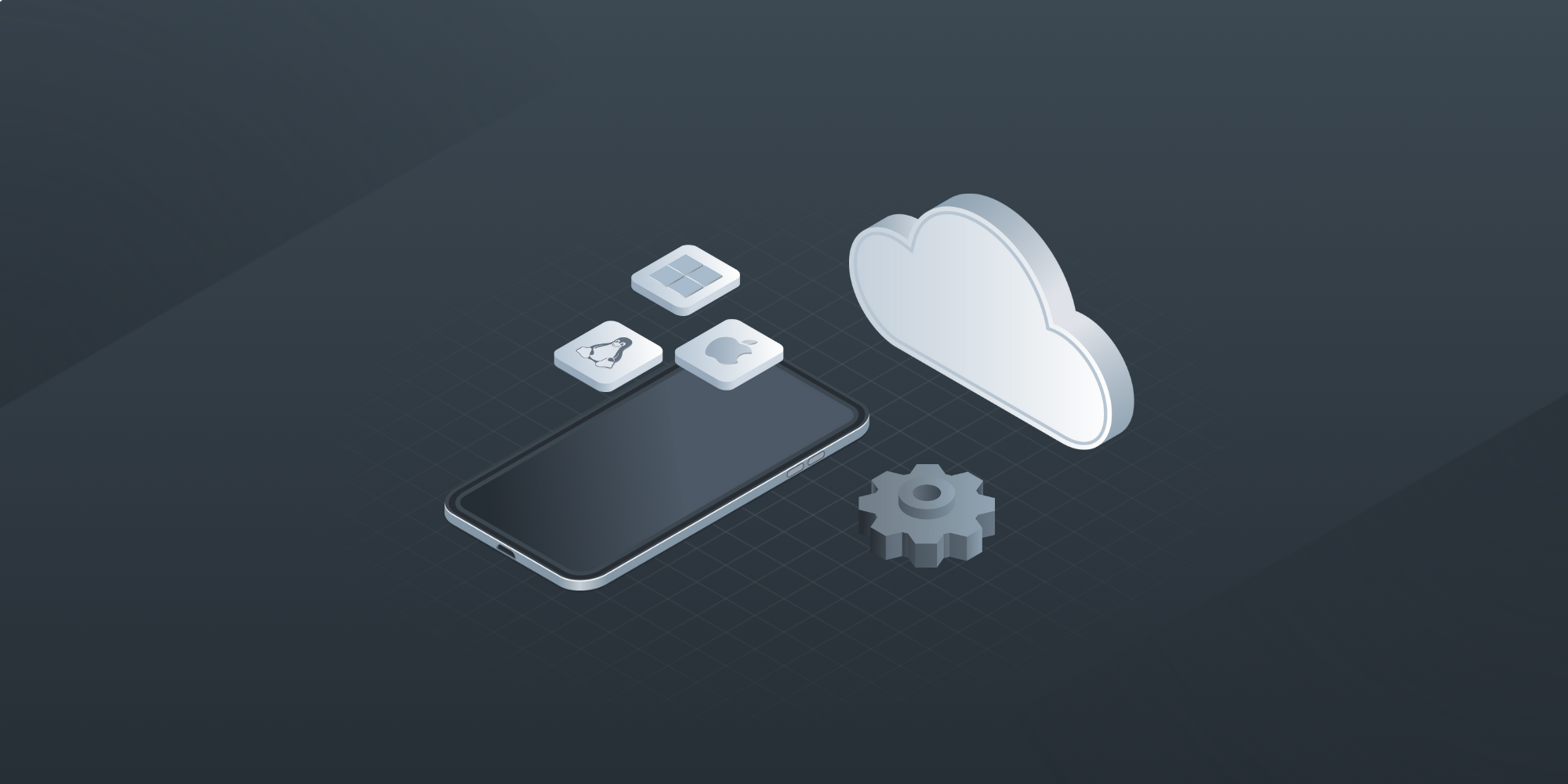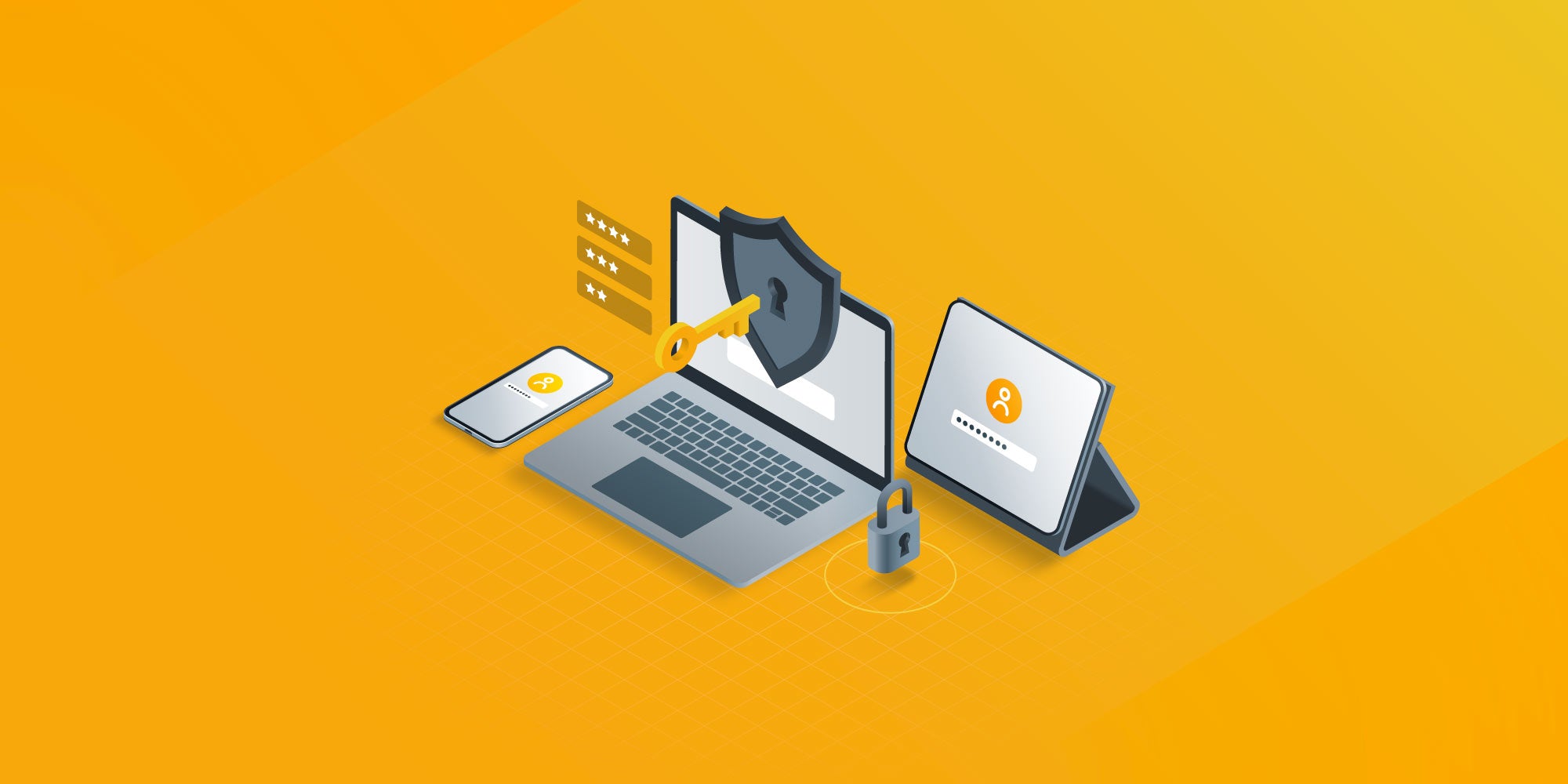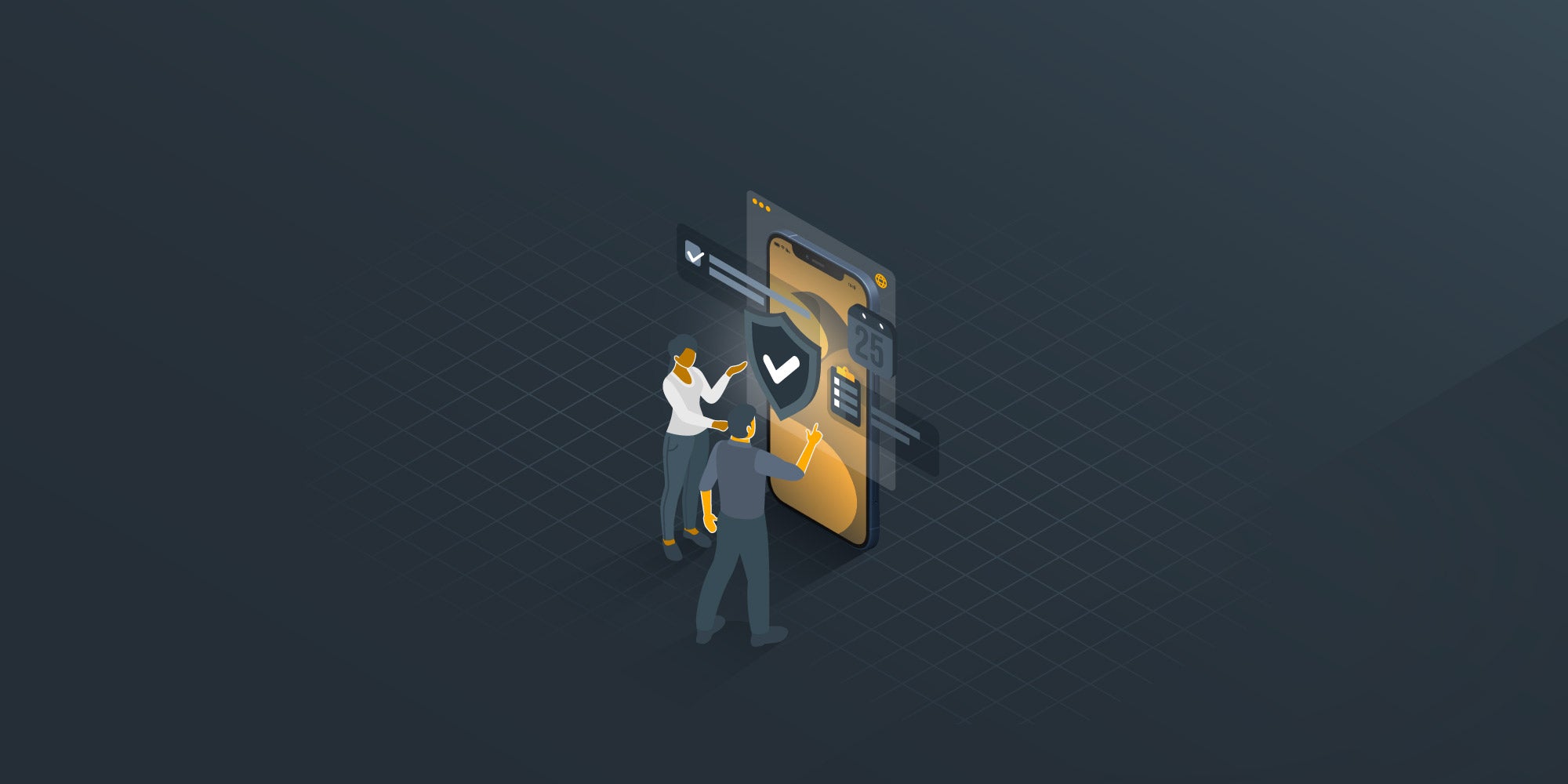The top 10 MDM features every distributed team must have
 Mara Quintanilla
Mara Quintanilla
For distributed organizations, securely managing and optimizing all mobile devices within their inventory is imperative. Mobile Device Management (MDM) is key in helping businesses enhance efficiency, security, and overall operational coherence.
As Forbes highlights, there's no excuse for lacking cybersecurity infrastructure in 2024, as data breaches keep making the rounds among high-profile companies. Casino giant MGM received a $100 million hit after a cyberattack in late 2023. While the Kansas court system suffered a five-week disruption due to an attack.
Understanding the essential MDM features can significantly enhance an organization's security and overall operational efficiency. More importantly, mobile device management helps mitigate the risks associated with data breaches, which have steep financial and security implications for companies globally.
Let's look at the ten MDM features every distributed team must have, the importance of mobile device management, some best practices, and common vendors.
Understanding the importance of mobile device management

The shift towards distributed work models has amplified the need for effective IT management strategies, particularly in mobile workforce management. Mobile device management systems provide essential tools for the administration, supervision, and security of mobile devices within an organizational framework. This software ensures that employees can maintain high levels of efficiency and security in their operations and mobile devices, regardless of where they happen to be working.
Mobile devices have become a crucial part of businesses' daily operations. Therefore, companies must adopt a more agile and secure approach that can guarantee these devices are managed effectively. The benefits of mobile device management lie in its ability to adapt to changing workplace dynamics, with an increasing emphasis on enterprise mobility management and remote access among mobile users.
For IT professionals navigating the complexities of distributed teams, MDM addresses critical pain points like tracking and managing mobile devices worldwide, ensuring each device's compliance, and seamless software updates. MDM's ability to streamline these tasks significantly reduces the burden on IT departments. By automating device management and security, MDM solutions allow IT teams to focus on strategic work rather than the manual oversight of device inventory. This enhances operational efficiency and safeguards corporate data across global operations.
Why MDM is crucial for distributed teams
Remote device management software helps IT admins enhance the device management experience, minimize cybersecurity threats, and remove operational friction.
Enhance the device management experience
Tom Bridge emphasizes that MDM is not just a tool for security but also a means to enhance the overall management experience for IT admins, who seek to handle everything from a central control point. "IT admins are looking for a great experience for themselves as well in managing everything from a common central plane," he explains, highlighting MDM's role in simplifying complex management tasks.
Minimize cybersecurity risks
Moreover, Bridge highlights a fundamental pain point: the awful consequences of a data breach. He stresses the importance of MDM software in avoiding such scenarios and ensuring a better experience for customers and stakeholders. His words encapsulate this, "Nobody wants to be on the receiving end of the bad news that ‘Hey, we got hacked because we weren't doing something right.'" MDM's role in data security is thus not just about protection; it's about maintaining trust and credibility in the digital world.
Remove operational friction
Additionally, Bridge points out the effectiveness of MDM software in removing operational friction, particularly through features like single sign-on and comprehensive mobile device data management policies. This approach is pivotal for a well-managed device fleet, allowing IT administrators to make informed decisions based on accurate data reporting. His view that MDM is about "removing friction from where friction is present in their work cycle" underlines its value in enhancing operational efficiency.
Mobile device management is not merely a defensive mechanism against potential threats but a proactive measure that streamlines IT operations and fosters a more secure and productive work environment.
Ten essential mobile device management features

Managing and securing IT equipment across cities worldwide is a huge challenge for global teams. MDM solutions address these challenges, ensuring teams have secure and efficient access to their work resources regardless of location. Let's look at the top 10 essential MDM features for distributed teams and how they contribute to a seamless, secure work environment.
1. Security
Security isn't just a feature; it's the foundation of effective MDM. With distributed teams, the risk surface expands significantly. Features like remote lock and wipe, device encryption, and malware protection are critical. They protect sensitive corporate data, even if a device is lost or stolen. Implementing these features helps create a robust security posture that safeguards enterprise data across all managed devices, a non-negotiable aspect for global businesses.
2. Access
Implementing role-based access control (RBAC) is crucial for operational efficiency and security. It ensures that employees have access only to the data and applications necessary for their specific roles. Seamless data access and management systems reduce data breach risk and enhance productivity by enabling remote information access.
3. Secure internet access
For distributed teams, accessing corporate network resources often means connecting via public or unsecured networks. Secure internet access through Virtual Private Networks (VPNs) and secure gateways is essential. It ensures that data transmission remains encrypted and safe from interception, a critical feature for maintaining the integrity and confidentiality of corporate data.
4. Usage monitoring
Understanding device and data usage within your distributed teams can provide insights into potential security risks, compliance with corporate policies, and areas for resource optimization. Intelligent usage monitoring can identify irregular patterns that may indicate a security breach or misuse of corporate resources, enabling timely intervention.
5. Encryption
Data encryption, both at rest and in transit, ensures that sensitive information is unreadable to unauthorized users. When data is transmitted across multiple networks, ensuring its safety is crucial in a distributed setting. Encryption standards provide a secure framework, ensuring data integrity and confidentiality across all devices and communication channels.
6. Where and when devices can be used
Geofencing adds a layer of security and compliance by using network access control and restricting device usage to predefined geographical locations. This feature ensures that sensitive data is not accessed or transmitted outside secure areas, providing peace of mind for companies with strict data residency requirements.
7. Integration
The value of a mobile device management solution is significantly enhanced when it integrates seamlessly with existing enterprise systems. This integration helps streamline workflows, reduces manual data entry, and enhances IT teams' and employees' overall user experience. It ensures the MDM system works harmoniously with HR software, IT service management tools, and identity providers.
8. Reporting
Access to detailed reports and analytics is invaluable for IT managers. It provides insights into device health, usage patterns, compliance status, and potential security threats. This data-driven approach allows for informed decision-making and proactive management of the IT estate, ensuring optimized resources and minimized risks.
9. Device diagnostics
The ability to remotely diagnose and troubleshoot device issues is a game-changer, especially for distributed teams. It minimizes downtime and boosts productivity by allowing IT teams to address problems without physical access to the device. This capability ensures that employees remain productive, regardless of their location.
10. BYOD support
With the increasing adoption of Bring Your Own Device (BYOD) policies, MDM solutions must balance the management and security of personal devices used for work. As an organization, it is important to prioritize the security of corporate data without compromising the privacy of its users. Effective MDM solutions manage this balance through containerization and selective wipe capabilities, which protect corporate data without infringing on personal information.
Best practices for implementing MDM solutions

To ensure compliance, it is important to communicate data management and employee privacy policies to all team members. To achieve these objectives, here are some best practices for MDM and their benefits that organizations should consider:
Implement policies before deploying an MDM solution
The foundation of effective mobile device management lies in clear, comprehensive policies. Before deploying any MDM solution, it's essential to establish guidelines that cover device use, identity and access management, security requirements, data management, and employee privacy. These policies should be communicated clearly to all team members to set expectations and ensure compliance. By implementing policies upfront, organizations can avoid potential conflicts and misunderstandings, making the MDM deployment process smoother and more effective.
Simplify the device enrollment process for MDM solutions
For MDM solutions to be effective, device enrollment must be as straightforward as possible. Complex enrollment processes can deter employees from following through, leading to unmanaged devices and potential security risks. Simplifying the enrollment process by offering step-by-step guides or automated provisioning tools can significantly improve compliance rates and user satisfaction. Ensuring that enrollment is hassle-free encourages employees to promptly onboard their devices, enhancing the overall security posture from the outset.
Establish self-service capabilities
Empowering employees with self-service capabilities for device management can significantly reduce the workload on IT departments and improve operational efficiency. Self-service portals where employees can manage basic device functions and settings, access FAQs, or troubleshoot common issues without direct IT intervention will streamline operations and enhance the user experience. This autonomy allows quicker resolutions to common problems and ensures devices are managed effectively, even in a distributed setting.
Ensure up-to-date MDM versions
Cyber threats continually evolve, so your MDM solution must be updated with the latest software versions. Regular updates include new features, security patches, and performance improvements to protect your operating system against vulnerabilities. Organizations should establish a routine schedule for updating their MDM solutions to ensure they benefit from the highest level of protection and functionality available.
Protect end-user privacy
Balancing corporate security needs with employee privacy is a critical aspect of MDM. Organizations must ensure their MDM policies are designed to protect user privacy by only monitoring and managing corporate data and applications. Clear guidelines on what information the company can access and under what circumstances help maintain trust and comply with privacy regulations. Privacy-centric MDM practices reassure employees that their data remains private, fostering a culture of respect and security.
Deploy containment technologies
Containment technologies, such as application wrapping and containerization, allow organizations to segregate corporate data from personal data on devices. This technology benefits BYOD (Bring Your Own Device) environments, providing a secure space for corporate devices, applications, and data that can be managed and wiped remotely without affecting personal content. Deploying containment technologies ensures that corporate information is secure while respecting employees’ privacy.
Monitor devices for specific activities or situations
Continuous monitoring of devices for specific activities or compliance with corporate policies is essential for maintaining security. MDM solutions can alert administrators to unauthorized attempts to access sensitive data, install unapproved applications, or modify device settings. Monitoring helps identify potential security threats early, allowing quick action to mitigate risks. Additionally, situational monitoring, such as geofencing, can enforce policies based on the device's location, further enhancing security and compliance.
Evaluating top MDM vendors
Selecting the right MDM vendor is a pivotal decision for ensuring the effective management and security of mobile devices within your organization. With numerous options available, it's important to understand the unique features and capabilities each vendor offers. You might also want to look into computer inventory software. Here's a deeper dive into some of the top MDM vendors and what makes them stand out:
GroWrk
GroWrk is a global end-to-end IT asset management and procurement platform with MDM software enrollment, identity management, and remote control capabilities. GroWrk is designed to help distributed teams handle device procurement, deployment, retrieval, storage, IT support, security, and end-of-life processes in more than 150 countries. GroWrk’s MDM solutions are powered by JumpCloud, which allows automated onboarding, advanced security, and enhanced visibility for all your Windows, Mac, and Linux devices. The GroWrk Dashboard lets you pre-configure each device’s software and security standards in just a few clicks.
Microsoft Endpoint Configuration Manager
For organizations deeply integrated into the Microsoft ecosystem, Microsoft Endpoint Configuration Manager offers device management features that integrate with Windows. Its strength lies in its ability to manage a broad spectrum of endpoint devices, including PCs, servers, and mobile devices, providing a cohesive and unified endpoint management solution across the enterprise. The solution's integration with other Microsoft products, such as Azure Active Directory and Office 365, enables streamlined management processes and enhances productivity.
VMware Workspace ONE

VMware's Workspace ONE presents a unified platform capable of managing mobile, desktop, and IoT devices across various operating systems. It allows employees to access any app on any device securely. Workspace ONE leverages automation and a policy engine to simplify the management of applications, including the deployment and security of enterprise and mobile apps. Its flexibility and scalability make it a choice for organizations managing a diverse and distributed device ecosystem.
Citrix Endpoint Management

Citrix Endpoint Management stands out for its flexibility and supporting various devices and applications. It offers mobile application management, content management, and mobile device security features. Citrix's solution is particularly beneficial for organizations prioritizing mobile productivity and looking for an MDM solution supporting a flexible work environment. Its compatibility with Citrix Virtual Apps and Desktops provides a seamless experience for users accessing virtualized applications.
When choosing the right mobile device management software, consider factors such as your organization's specific needs, the types of employees' mobile devices that you need to manage, software functionality, integration capabilities with your existing IT infrastructure, and the required level of security and compliance.
Each vendor offers unique advantages, and the right choice will depend on your organizational context, the complexity of your IT environment, and your strategic priorities for mobile device management.
It's also advisable to explore case studies, request demos, and thoroughly compare features and pricing models to ensure that the selected MDM solution aligns with your objectives and offers the best value for your investment.
Remember, the success of your mobile device management strategy depends on the technology and how well it integrates with your workflows and supports your team's productivity and security needs.
Wrapping up
MDM has evolved from a mere operational tool to a strategic asset, crucial for enhancing distributed teams' efficiency, security, and compliance. As businesses adapt to the complexities of managing a distributed workforce, the MDM's role in maintaining seamless operations and a competitive edge cannot be overstated.
Implementing advanced MDM features is vital for organizations to foster a connected, secure, and productive work environment. Selecting the appropriate MDM solution and adhering to best practices in deployment allows businesses to support their operational objectives effectively. As businesses move forward, staying responsive to tech advancements and evolving security challenges will be key to leveraging MDM for global success.
In essence, MDM is not just about device management; it's about empowering distributed teams to thrive in a globalized business landscape. By embracing MDM, companies can ensure their workforce remains agile, secure, and ahead of the curve.
GroWrk helps your organization streamline mobile device management for your global teams. Our solution lets you easily enroll Windows, Mac, and Linux devices. You can pre-configure your devices’ software and security standards from a central dashboard, making global onboarding as easy as one click. Get a free demo here.







